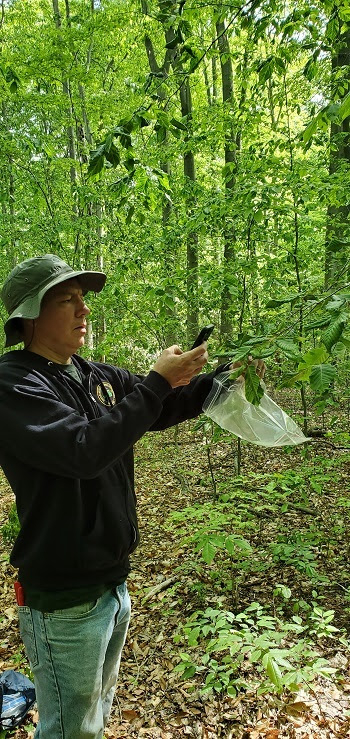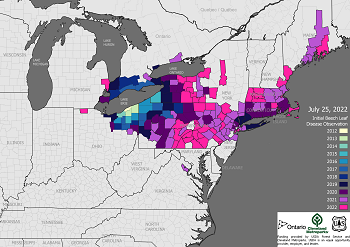DNR makes effort to utilize at-risk resources with ash and beech salvage
GW: Getting some value from these dying trees makes nothing but sense. For me, as many others, I’ve used plenty of ash wood to heat my home and hot water. If you plan to harvest ash trees, be careful, however. They are mighty dangerous if they’ve been dead for a number of years and can snap off anywhere along the trunk.
Michigan state forest land is currently battling two invasive forest pests that have the potential to significantly change the forest composition and further reduce the diversity of tree species that have historically made up the state forest system.
Beech bark disease (BBD) was detected in Michigan forests in 2000. It has been present throughout the eastern Upper Peninsula for a number of years and is now infesting forests of the northwest Lower Peninsula. While the majority of the beech in a stand eventually become infected and die, the mortality from BBD can take several years, and there are a small number of trees that appear to have some resistance to the disease.
Emerald ash borer (EAB) was discovered in Michigan in 2002 and has spread through most of the Lower Peninsula and is now present in a few locations in the Upper Peninsula. Once infected with EAB, ash mortality is rapid, with no resistance shown to date. Once signs of infestation are observed, there is approximately a two-to-three-year window of opportunity where the timber can be harvested and utilized before the wood is no longer salvageable.
Bill O’Neill, chief of the Department of Natural Resources’ Forest Resources Division, said the DNR has been salvaging beech on state land in the eastern Upper Peninsula over the past several years and is now beginning to salvage beech in the Lower Peninsula as the disease moves into those stands and mortality begins.
EAB had been primarily infecting and killing ash in the lower part of the state, but in the past year the department has seen a significant increase in the spread of EAB into most areas of the Lower Peninsula, including some high-quality northern hardwoods stands.
Because of the large volume and, in many cases, high quality of these stands, the DNR has been working on an aggressive salvage effort throughout the northern Lower Peninsula. The Gaylord Forest Management Unit – which includes Antrim, Charlevoix, Cheboygan, Emmet and Otsego counties – has a disproportionately high percentage of both the volume and the quality of the ash resource.
On state land in these counties, the DNR is preparing and selling salvage sales to recover as much volume and value as possible in the next few years. Initially the harvesting will be concentrated in Emmet County, but does include stands in most northern Lower Peninsula counties. These salvage efforts are targeting only those forest stands that have a volume and value of ash and beech that would be merchantable.
“Because there is very little likelihood of any ash and very few beech surviving the infestations, the majority of those two species in the target areas are being removed during salvage operations,” said O’Neill, who also serves as state forester. “Care is being taken to ensure that some trees are left to provide wildlife habitat, and any beech showing signs of possible resistance won’t be harvested.”
While there will be a concerted effort to harvest a large percentage of the trees before they die, there will be areas that are inaccessible, have low volumes, or are in areas where harvesting would not be feasible at this time and will therefore have ash and beech that are left to die.
Following salvage operations, or after the trees die from the EAB or BBD, the DNR is expecting to see maple, basswood, black cherry, paper birch, aspen and other hardwood species regenerating in the openings created by the dead trees.
The DNR’s Forest Resources and Wildlife divisions have also been experimenting with planting oak saplings in openings in hardwood stands. The introduction of oak to these stands will be done with the goal of replacing an important food source for wildlife that will be lost as the beech trees die.
For more information about BBD or EAB, visit www.michigan.gov/foresthealth.






